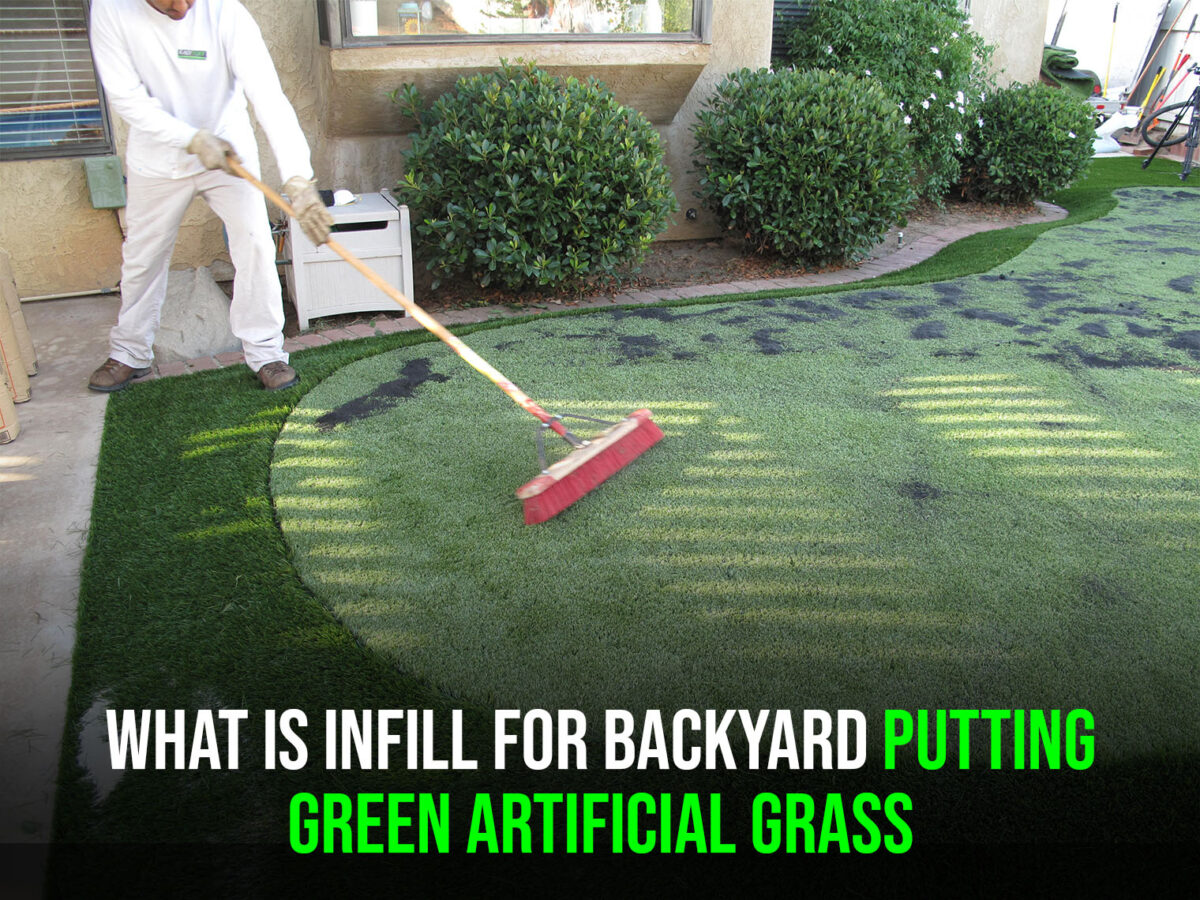 BACK
BACK
- BACKYARD
- COMMERCIAL
- ENVIRONMENT
- FIELD TURF NEWS
- GOLF
- MAINTENANCE
- NEWS
- PETS
- POOL
- RESIDENTIAL
- TURF TIPS
Why Infill Is a Must for Backyard Putting Green Artificial Grass

Infill may be invisible, but it’s absolutely critical for putting green artificial grass. This crucial material fills the blades of synthetic turf to enable the look, feel, and performance that make today’s faux lawns and home putting greens nearly indistinguishable from the real thing.
But what exactly is infill and what types are out there? We’re answering those questions and mor
What Is Infill and Why Do You Need It?
It refers to the material that fills the turf backing to the top of the grass blades. It’s usually fine-grained sand or granules of rubber, minerals, or organic materials like cork.
It plays several roles in artificial grass installations:
- Weighs Down Putting Green Turf – It provides weight and stability to the artificial blades to keep them upright. Without infill the blades would easily crush down and mat, especially if you play on your putting green often.
- Resilience – The infill allows the blades to rebound after use for consistent cushioning. This enhances the natural feel underfoot and makes sure it’s ready for your next round of practice.
- Support – It offers support to the turf backing for durability. It helps protect against compaction and damage, all of which can affect the performance of backyard putting greens.
- Aesthetics – Infill helps produce a lush, vibrant landscape that convincingly mimics real grass.
As you can see, infill isn’t just filler—it affects everything from the look and feel of artificial grass to its performance.
Common Types of Infill for Artificial Grass
From silica sand to colorful rubber granules, it comes in many forms. The right type for your project depends on factors like budget, pets, climate, and primary use. Here are some examples:
- Silica Sand
Silica sand infill is a popular choice for lawns and general landscaping. This natural sand is non-staining, affordable, and provides stability and support to artificial turf. It also allows for efficient drainage.
- Coated Silica Sand
Acrylic coating helps reduce compaction while retaining the affordability and drainage of silica infill. It also minimizes dust for a cleaner landscape. The coating comes in various hues, like green, tan, or brown, to blend with grass colors.
- Organic Infill
For an eco-friendly, natural option, organic infills like cork, coconut fibers, or walnut shells are growing in popularity. Though pricier, organic infill stays cooler, resists compacting, deters bugs, and reduces static. It can also be replenished more easily than sand or rubber.
The right type of infill for your putting green still depends on the specifics of your project and we can discuss that during our call.
Book a FREE Consultation
To learn more about infill and other aspects of putting green artificial grass installation, please send us a message to book a consultation.
We’d love to hear your ideas, including the design you want for your artificial putting green, any features you have in mind, and if you have any concerns. Let us know if you have any other questions – we’ll get back to you promptly.


